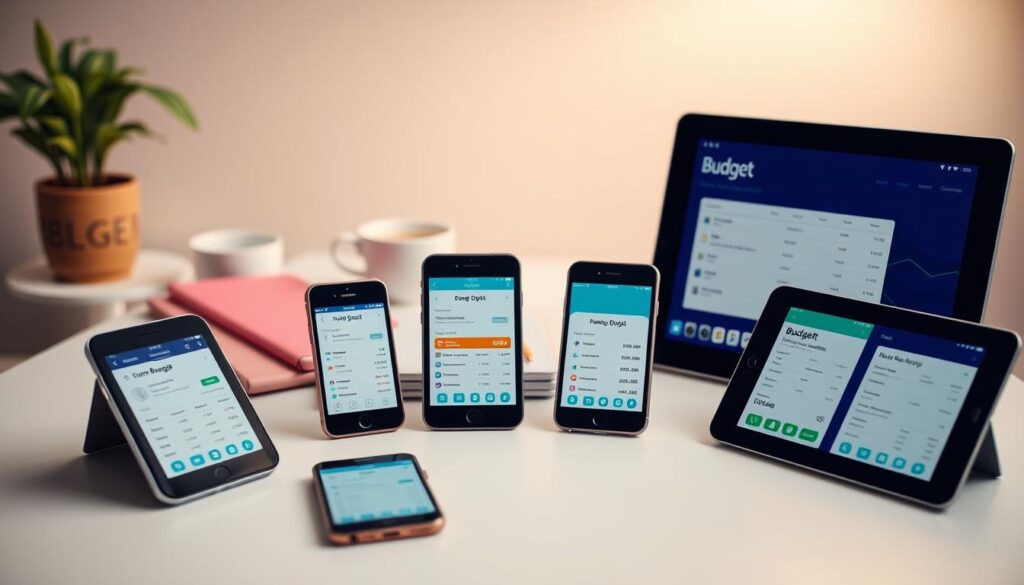What if I told you you don’t need complicated spreadsheets or advanced math skills to master budgeting? Budgeting is really about making simple choices that add up. Whether you’re looking for effective student budgeting tips or just starting your financial journey, I used to think it meant staring at endless numbers, but that’s not true.
This guide is for anyone new to budgeting. Whether you’re drowning in receipts or just starting, it’s for you. It’s about learning to manage money in a way that works for you.
My journey began with the same fears: “What if I mess up?” “What if I can’t stick to a plan?” Now, I’ll show you how to start small with budgeting for beginners.
Using real-world tips that fit your life, no formulas, no stress—just actionable steps to take control. Ready to turn “I can’t budget” into “I’ve got this”?
Why Budgeting Matters (Even When You’re Bad With Numbers)
Budgeting isn’t about math—it’s about control. When I started learning how to budget and save money, I thought spreadsheets would stress me out. But the truth? A simple budgeting method along with some valuable student budgeting tips changed how I see money. It’s not about limits; it’s about purpose.
- Clarity: Knowing where dollars go stops guesswork.
- Goals: Saving for a trip or a car becomes measurable.
- Peace: Less stress over unexpected bills.
“Budgeting is the ultimate tool for financial freedom, not restriction.”
My first budget tracked just three categories: bills, savings, and fun. Within months, I saved for a vacation without debt. Tools like Mint or even a notebook work—no calculus required. The key is starting small. A simple budgeting method lets you see progress, not penalties.
Studies show 70% of Americans feel anxious about money. Budgeting cuts that anxiety. When you map out expenses, you’re not just tracking numbers—you’re building confidence. My late-night worries about overdrafts? Gone. Instead, I sleep better knowing my money aligns with what matters most.
Ready to try? Pick one simple budgeting method today. Start by listing income vs. needs. You don’t need a degree—just curiosity. Your future self will thank you.
Budgeting for Beginners: Starting With the Basics
Starting with budgeting doesn’t need spreadsheets or math. First, know your take-home pay after taxes. This is your budget’s base. I use a notebook, but apps like Mint or GoodBudget work well too.
- Write down every expense for a week—coffee, groceries, bills—to see where money goes.
- Separate needs (rent, food) from wants (streaming services, hobbies).
- Set small goals, like saving $50 a month, to stay motivated.
“Budgeting is about choices, not restrictions.”
For students, budgeting tips are about being flexible. Plan for semesters, not months. Set aside money for textbooks and snacks. I saved by using dorm meal plans and thrift stores.
Remember, being consistent is more important than being perfect. Even a simple budget helps. Start today and adjust as you learn. Next, try the 50/30/20 rule for an easier way to budget.
The 50/30/20 Rule: Your Simple Budgeting Framework
I started using the 50/30/20 rule after finding it hard to track every dollar. This simple budgeting method splits your income into three parts. 50% goes to needs, 30% to wants, and 20% to savings or debt. It’s easy to follow, no matter how much you earn.
Here’s how I broke it down:
- Needs (50%): Rent, groceries, utilities, and insurance. These are non-negotiable.
- Wants (30%): Dining out, streaming subscriptions, or new clothes. This isn’t “extra spending”—it’s balance.
- Savings/Debt (20%): Emergency funds, retirement, or paying off loans. This part grows your financial stability.
When I first tried this, my wants ate 40% of my income. I adjusted by cutting cable TV and cooking at home. Even small shifts matter. Ask yourself: Is that $15 latte a need? Probably not—but the rule lets you keep some treats while staying on track.
Flexibility is key. If you’re deep in debt, flip the savings/debt percentage to 30% and shrink wants to 20%. The goal isn’t perfection—it’s building habits. Use apps like Mint or YNAB to track your 50/30/20 splits automatically. Every month, review where you’re off and adjust. This simple budgeting method becomes second nature in weeks.
Best Free Budget Apps to Track Every Dollar Without Spreadsheets

Forget spreadsheets—best free budget apps make tracking finances easy. I’ve tried many, and these three are the best:
- Mint: Automatically connects to bank accounts, finds hidden fees, and shows spending graphs. It’s great for those who learn better visually.
- EveryDollar: Uses Dave Ramsey’s methods to help you save. It breaks down big goals into daily steps.
- Yale: Tracks cash flow in real time and alerts you when you’re close to your budget. It’s perfect for those who spend on impulse.
Keeping your data safe is important. All these apps encrypt transactions and let you control who sees your data. One user said, “Mint saved me $300 last month by showing me subscriptions I forgot about.”
Even if you’re not tech-savvy, you can start small. Use best free budget apps with a physical ledger for receipts. This combo is very effective. Choose one, link your accounts, and see your spending patterns without the hassle of spreadsheets.
“The right app turns budgeting from a chore into a habit.”
These free budgeting apps are more than tools—they’re lifesavers. I’ve cut my monthly expenses by 20% without using Excel. Try one this week and see where your money goes.
Beyond Apps: Practical Budgeting Systems That Actually Work
When digital tools aren’t enough, try classic simple budgeting methods that don’t need screens or spreadsheets. I used the cash envelope system to stop overspending on coffee and impulse buys. Here’s how it works:
- Assign cash to categories like groceries, gas, or entertainment.
- Withdraw your budgeted amount and split cash into labeled envelopes.
- Once the envelope is empty, you’re done spending for that category.
The “Pay Yourself First” approach is also a game-changer. Automate savings transfers first, then budget with what’s left. This mindset keeps your goals in focus. Use a free budget planner template to track progress on paper or a shared family calendar.
“A system that works is one you stick to, not one you admire.”
Hybrid setups mix old and new: use an app for savings tracking but cash envelopes for daily spending. Or download a free budget planner PDF to map out expenses weekly. The key is matching methods to your habits—not forcing a trendy tool.
Start small: try one cash envelope for eating out this month. Consistency, not perfection, builds lasting habits. You’ll find what works when you mix flexibility with structure.
How to Automate Your Budget and Save Without Thinking

Automation makes budgeting easy. Tools like personal budgeting software help set up automatic payments and savings. First, connect your bank accounts to the software. Then, set up transfers to savings right after you get paid.
- Set auto-pay for bills to avoid late fees
- Use rules in free expense tracker apps to flag overspending
- Enable round-up savings features to stash spare change automatically
I use apps like Acorns and Qapital for effortless savings. They move small amounts into investments without me doing anything. Features like rounding up purchases or saving $5 after a coffee add up over time.
Every two weeks, I review my free expense tracker to check if everything is on track. Making small adjustments takes just a few minutes. This keeps my savings on course without me thinking about it.
Apps like Mint or YNAB’s “auto-categorize” features keep my budget in check. They send alerts for due dates and quietly grow my savings. No more forgotten transfers or spreadsheet stress.
Budgeting Through Life Changes: Adapting to New Financial Realities
Life’s twists don’t wait for your budget. So, your plan must move with you. Whether it’s a new baby, a job change, or a move, you need to rebuild your budget. Start by updating your fixed costs like housing or childcare.
Couples can merge finances by saving 20% of their income together. Tools like Mint or You Need A Budget help you test these changes. Try out different income levels or new bills to see how your savings fare.
- Job changes: Save 6-9 months of expenses before leaving a steady job.
- Relocation: Use budget apps to compare cost-of-living indexes between cities.
- Health crises: Build a 10% “life change” buffer in your emergency fund.
Unexpected events require fast action. Create a “crisis budget” with only essential costs. When my income dropped 30% during a career shift, this kept me on track.
Being flexible is key to survival. Set up quarterly budget reviews tied to big life events like anniversaries. Your money plan should grow with you, not stay stuck in the past.
When Your Budget Breaks: Troubleshooting Common Problems
Budget breakdowns can happen to anyone, even me. When mine crashes, I use a free expense tracker to find out where I went wrong. Maybe I spent too much on eating out or had unexpected medical bills. These are normal issues, not failures. Here’s how to fix them:
- Track daily: Use a free expense tracker to spot recurring leaks.
- Adjust categories: Rethink your budget. Being flexible can help.
- Talk it out: Use personal budgeting software to show your partner your spending patterns.
Once, I overspent for months until I saw patterns in my tracker. A 7-day reset helped: cut non-essentials and rebuild habits slowly. When my partner and I argued about car repairs, we used personal budgeting software to find common ground. Numbers help calm emotions.
“My budget failed 3 times before I learned to ask: ‘Where’s the leak?’ Now I fix it faster.”
Budget slip-ups teach us more than perfection. Tools like free trackers and software turn confusion into clarity. Every hiccup is a chance to tweak, not quit.
Conclusion: From Budgeting Beginner to Money Management Pro
Building a budget is not about being perfect. It’s about making progress. Every step you take towards how to budget and save money brings you closer to financial freedom. Start small by tracking your spending for a week, automating savings, or saving even $5 a day. These small steps add up.
My journey started with confusion, but using tools like Mint or YNAB from the best personal finance software made tracking easier. Celebrate your wins, like saving your first emergency fund or a month without overspending. These milestones build confidence, not just in money management but in life itself. When you control your finances, anxiety fades, and clarity grows.
Follow a 30-day plan: choose an app by day 7, adjust your budget weekly, and revisit goals monthly. Let the 50/30/20 rule guide you, but stay flexible. When setbacks happen, tweak your plan instead of quitting. Remember, even small savings compound over time.
Today, I use tools like PocketGuard to stay on track, but it all started with one small step. Your path will look different, but the principles remain the same. Budgeting isn’t just about numbers—it’s about unlocking choices. Start now, embrace the learning, and watch how how to budget and save money transforms not just your wallet, but your whole life.

